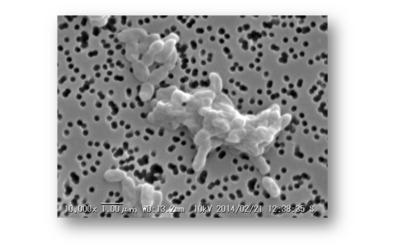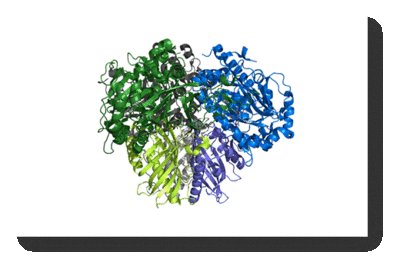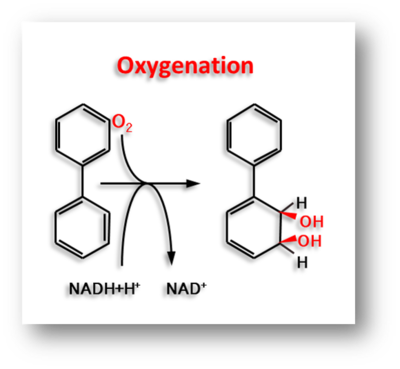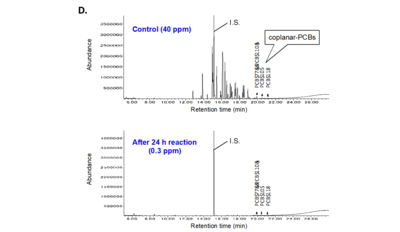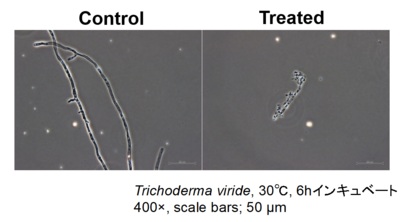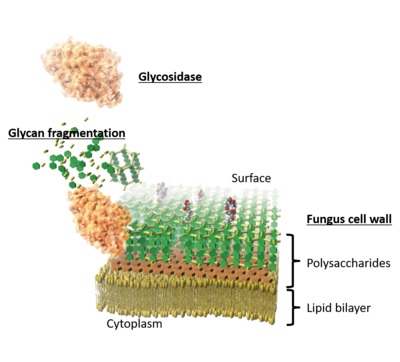Environmental Microbiology
The Laboratory for Complex Energy Processes Environmental Microbiology Research Section
Program-Specific Professor : Tomijiro HARA
Program-Specific Associate Professor : Yumiko TAKATSUKA
Energy issues and environmental issues are inseparable. We are still highly dependent on fossil energy, and there is concern that discharged greenhouse gases will break the harmony of global environment. In addition, we need large amount of energy to remediate an environmental pollution that remains the shadow of the progress of civilization with fossil fuel energy consumption.
As one of the creating methods for sustainable society, we confront the development of practical applications utilizing "enzymes" that are highly energy utilization efficiency in substance catabolism.
Establish an optimal process utilizing the oxidation-reduction reactions of enzymes for advanced environmental remediation
Polychlorinated biphenyls (PCBs) are organochlorine compounds containing theoretically 209 homologs of various chlorine substituents, and it had used in various industrial applications as "dream substance". However, PCBs has been already promoted globally abolition of the usage and the manufacturing since it was proven human endocrine disruptor. Biphenyl dioxygenase (BDO) plays a crucial role for degradation of PCBs.
BDO catalyzes incorporation of two oxygen atoms into the aromatic ring of PCBs, and it induces the ring cleavage. We developed the composite type of catalytic enzymes with two BDOs that having different substrate specificity and the bioreactor for generating oxygen microbubbles that enhancing the enzymatic activity of BDOs. As the result, we succeeded constructing the practical system using both the catalytic enzyme and the microbubbles that degraded over 99% of 40 mg L-1 commercial PCBs in 24 hours. In order to expanding this composite degradable reaction of PCBs, we are trying to create unique artificial enzymes, which reduce PCB by two-electron reduction.
A. Scanning Electron Microscope image of Comamonas testosteroni YAZ2 strain which produce biphenyl dioxygenase (BDO). This strain is gram negative
and rod-shaped bacterium. Magnification is ×10,000. Scale-bar is 1 μm.
B. Molecular structure model of BDO which catalyze oxygenation reaction toward PCBs (Ref: PDB).
C. Enzymatic reaction showing how BDO hydroxylates one aromatic ring by adding oxygen to biphenyl.
D. The result of reacting 40 mg mL-1 of commercial PCBs with composite type of catalytic enzyme, it degraded to 0.3 mg mL-1 in comparison with the control (top) within 24 hours (bottom). PCBs was analyzed by gas chromatograph quadrupolemass spectrometer.
Establish an optimal plant disease control methods utilizing enzymatically reaction for an organic food production
Many of plant diseases are generally caused by either ascomycetes or basidiomycetes that belonging to filamentous fungi. "Filamentous fungi" is hypha, and it is proliferated to mycelia. The cell wall is engineered as a composite material. It incorporates a mix of cross-linked fibers and matrix components. The fibrous components of cell wall are glucan, chitin, and mannan, and these sugarchains contribute forming a supple and solid filiform microfibril wall. Glycosidase is one of the hydrolases that catalyzes the hydrolysis of glycosidic bonds in complex sugars. We develop a new bio-molecular type of fungicide utilizing the hydrolysis reaction of glycosidase against fungal microfibril wall. Up to now, our composite type of bacterial catalyst composed of 5 strains from class Bacilli, which produce and secrete various glycosidases, controlled 99.3% of a tomato- Pestalotia disease with Pestalotiopsis sp. Glycosidases are classified into approximately 130 families, and its catalytic reaction is roughly divided into anomeric-inversion and/or anomer- retention, and exoglycosidase or endglycosidase. Hence, the classification of glycosidase can be understood diverse, and we consider that it is possible to digest fungi cell wall efficiently, by compositely capably using these diversities of enzyme reactivity.

